ABERDEEN PROVING GROUND, Md. — Army Futures Command, or AFC, is helping to increase Soldier lethality and survivability through the research and development of lighter batteries with more power and extended runtimes.
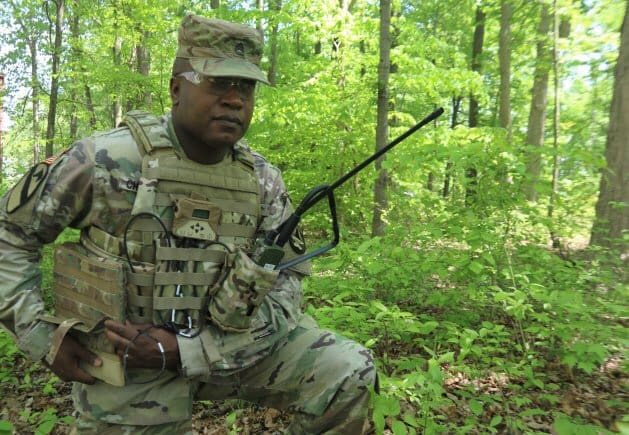
As the Army modernizes the current force and prepares for multi-domain operations, the quantity and capabilities of Soldier-wearable technologies are expected to increase significantly, as will the need for power and energy sources to operate them.
Engineers and scientists at AFC’s subordinate command — the Combat Capabilities Development Command, or CCDC — are making investments to ensure future power and energy needs are met by exploring improvements in silicon anode technologies to support lightweight battery prototype development.
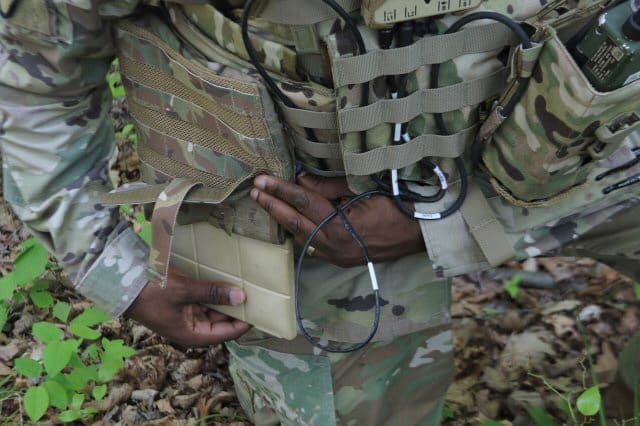
“This chemistry translates to double the performance and duration of currently fielded batteries for dismounted Soldiers,” said Christopher Hurley, a lead electronics engineer in the Command, Power and Integration Directorate, or CP&ID, of CCDC’s center for Command, Control, Communications, Computers, Cyber, Intelligence, Surveillance and Reconnaissance — or C5ISR.
“The capabilities of these materials have been proven at the cell level to substantially increase energy capacity. We’re aiming to integrate those cells into smaller, lighter power sources for Soldiers,” Hurley said. “Our goal is to make Soldiers more agile and lethal while increasing their survivability.”
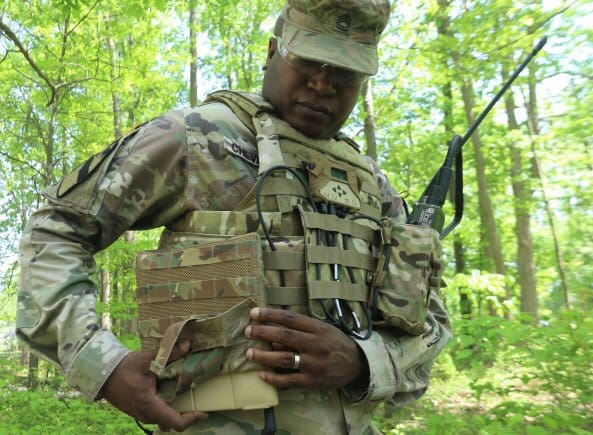
Soldiers currently carry an average of 20.8 pounds of batteries for a 72-hour mission. With the Army focused on modernization and the need to add new capabilities that require greater power, the battery weight will continue to increase and have a detrimental effect on Soldiers’ performance during missions, Hurley said.
“The C5ISR Center is helping the Army get ahead of this problem by working on advanced materials like silicon anode,” said Hurley, who noted that incorporating silicon-based anodes into Army batteries will cut their battery weight in half.
The C5ISR Center is incorporating component-level R&D of advanced battery technologies into the Army’s Conformal Wearable Battery, or CWB, which is a thin, flexible, lightweight battery that can be worn on a Soldier’s vest to power electronics. Early prototypes of the updated silicon anode CWB delivered the same amount of energy with a 29 percent reduction in volume and weight.
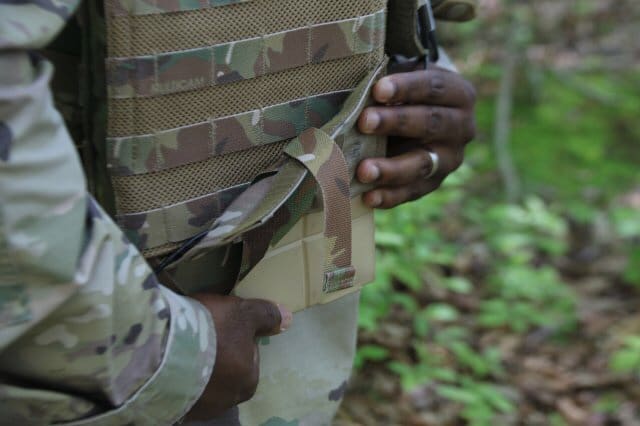
The military partners with the commercial power sector to ensure manufacturers can design and produce batteries that meet Warfighters’ future needs. However, the needs of civilian consumers and Warfighters are different, said Dr. Ashley Ruth, a CP&ID chemical engineer.
The Army cannot rely on the commercial sector alone to meet its power demands because of Soldiers’ requirements, such as the need to operate at extreme temperatures and withstand the rigors of combat conditions. For this reason, the electrochemical composition in battery components required for the military and consumer sector is different.
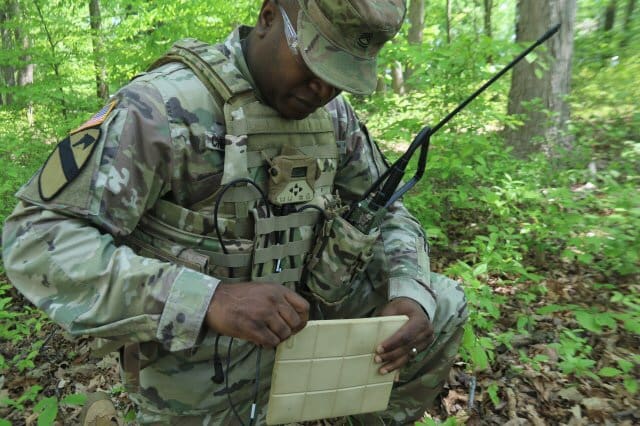
“An increase in silicon content can greatly help achieve the high energy needs of the Soldier; however, a great deal of research is required to ensure a suitable product. These changes often require entirely new materials development, manufacturing processes and raw materials supply chains,” Ruth said.
“Follow-on improvements at the component level have improved capacity by two-fold. Soldiers want a CWB that will meet the added power consumption needs of the Army’s future advanced electronics.”
As the Army’s primary integrator of C5ISR technologies and systems, the C5ISR Center is maturing and applying the technologies to support the power needs of the Army’s modernization priorities and to inform requirements for future networked Soldiers. This includes leading the development of the Power and Battery Integrated Requirements Strategy across AFC, said Beth Ferry, CP&I’s Power Division chief.
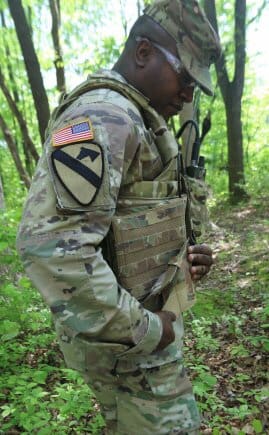
As one of the command’s highest priorities, this strategy will heavily emphasize power requirements, specifications and standards that will showcase the importance of power and energy across the modernization priorities and look to leverage cross-center efforts to work on common high-priority gaps.
Power Division researchers are integrating the silicon anode CWB with the Army’s Integrated Visual Augmentation System, or IVAS, a high-priority augmented reality system with next-generation capabilities for Solider planning and training. Because IVAS is a dismounted Soldier system that will require large amounts of power, the Army is in need of an improved power solution.
To gain Soldiers’ feedback on varying designs, the C5ISR Center team plans to take 200 silicon anode CWB prototypes to IVAS Soldier Touchpoint 3 Exercise in July 2020. This will be the first operational demonstration to showcase the silicon anode CWB.
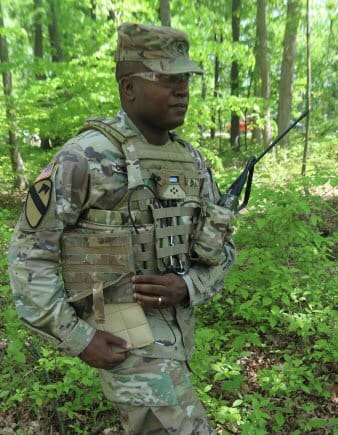
The C5ISR Center is finalizing a cell-level design this year, safety testing this summer, and packaging and battery-level testing taking place from fall 2019 to spring 2020. Advances in chemistry research can be applied to all types of Army batteries, including the BB-2590, which is currently used in more than 80 pieces of Army equipment.
“A two-fold increase in capacity and runtime is achievable as a drop-in solution,” Ruth said. “Because of the widespread use of rechargeable batteries, silicon anode technology will become a significant power improvement for the Army.”
By Dan Lafontaine, CCDC C5ISR Center Public Affairs


“Soldiers currently carry an average of 20.8 pounds of batteries for a 72-hour mission.”
That seems like an incredible amount of batteries; a CR123 is 17g, so thats the equivalent of 555 CR123’s.
I assume this is the total batteries carried by the squad?
Yes – once you start adding in ASIP/PRC-177/PRC-148/PRC-152 batteries (to say nothing of the dismounted systems for countering IEDs and what not) there’s a lot of weight invested in energy.
We played with this system a few years ago, or at least something which looked identical. DARPA provided it, and we had them tethered to Samsung smart phones in Tyr cases for a local “battlefield net” (think Ghost Recon, and you’re not far off) – the idea is cool but I think the execution leaves a lot to be desired in terms of bulk or risk of fire.
The simpler answer is to remove a lot of the technological constraints and reward things like “Commander’s Initiative,” “Leadership Principles,” and “Assuming Appropriate Risk” but that’s not an option in today’s C2/C4-centric world… at least not until the EMP pulses hit.
I was thinking standardizing on a a single, off the shelf high capacity battery would make a lot of sense.
18650’s, for example, are the same length as 2xCR123’s and only 2mm wider, and weighs 47g.
2 x CR123 ~ 9W/hr
1×18650 ~ 14W/hr
So each battery offers ~50% increase in runtime, and being rechargeable, they could be charged via vehicles or backpackable solar charger during the day, reducing the overall number of batteries that would have to be carried in the field.
A 5590 battery that powers most squad/PLT radios weighs 5.5lbs full or empty and you need 2x a day. 20.8lbs for a 3-day dismounted mountain op is very very conservative. And we don’t leave empty batteries out in the field. This is a huge problem that needs solving.
Thanks for that info.
A 5.5lb battery is brutal; thats like a LAW rocket/5 pmags worth of battery weight. And not being able to discard empties is absurd.
Seems like creating a more energy efficient Radio that uses 18650’s would be an 80/20 solution.
The BA-5590 is only 2.25 lbs. and are rated for 28 hours (yeah, I know). Oh, and they’re filled with a lithium/sulfur dioxide mixture. Not something you really want to leave scattered around, for a number of reasons.
Moving to the BA-2590, it’s a rechargeable replacement for the 5590. One more reason to carry the empties.
Sexy. Now give me a version that lets me run an Yaesu FT-818nd &/ charge a VX-6R…
We can do better than this. I don’t understand why it’s so hard to get the weight off our guys
Revision Military has a COTS option that is commercially available right now with the Nerv Centr. 1.5lb sharepack provides a Soldier with an operational days worth of power (152wH) with an integrated power management system that affords the Soldier the capability to recharge on the go from a variety of power sources outside the wire.
Oh it’s also a variable voltage output so it can power not only the handhelds but the 117G, 1523, 150’s out there in the inventory.
and it also has a visible read out so the Soldier knows how much power they have left at the current power draw and if the Soldiers use them every day for under 3 years it will still have 98% of its state of charge. (1000 cycles).